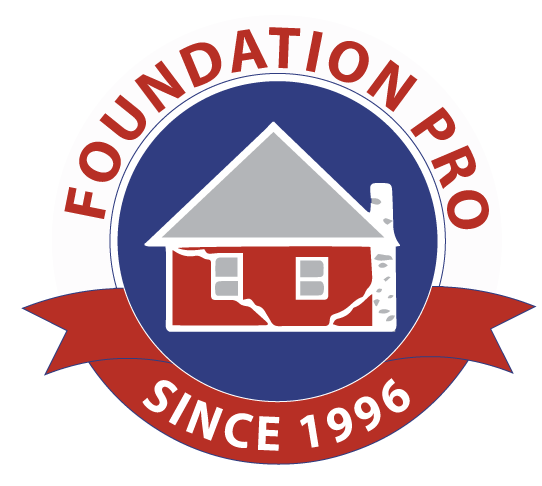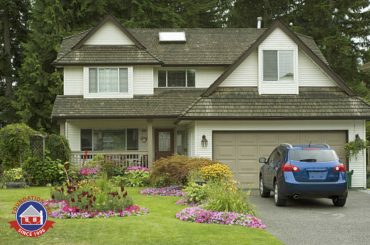Part of the charm of an older home is those little hand-crafted elements you don’t always get in newer models. The lifespan of a home often relies upon the materials used during its construction, the era in which it was built, and your climate. Historic homes in Arkansas often adopt French Colonial, Victorian, and Gothic Revival architectural qualities. These homes are most likely composed of a wide variety of materials such as brick, wood, or stone. Your foundation repair professional should be knowledgeable about the style and age of your home in order to make accurate repair suggestions. The following are some of the most common foundation problems (and solutions!) found in older homes.
Older Foundation vs. Modern Concrete Slabs
Modern, concrete slab foundations were not popularized until the 1940’s, during the influx of homes built after World War II. Foundations used before that time were often constructed by posts and beams, leaving more opportunities for damage. Even slabs from the early days of concrete foundations are less stable, because they were thinner and made with less reinforcement. An older house can show signs of disrepair that can actually be traced back to a crumbling foundation.
Common Foundation Problems Found in Older Homes
Homes older than 50 years are widely considered to be “old” in the realm of real estate. The foundational issues found in older homes are what we in the industry call “Warning Signs.” It’s important to call a professional at the first sight of trouble, because it means that larger (and more hazardous) damage may be afoot. The following are some of the warning signs most often found in older homes with damaged foundations.
- Uneven Floors. Don’t overlook your creaking and uneven floors! It may be easy to tell yourself that bowing and uneven floors are just part of owning an old home, but they are sometimes a sign of a bigger problem. Luckily, discovering this issue is relatively easy and usually occurs after you drop a pencil and watch it roll down “hill.” If your uneven floors are not a foundational issue, a foundation repair professional will be able to tell you with a quick inspection.
- Sticky Doors and Windows. “No!” You say. “My house just has personality! A little elbow grease, and that sticky door will be repaired in no time.” Sometimes, the door is not the problem. Sometimes, the foundational shift has caused your windows and doors to incrementally shift, creating jams and gaps.
- Drywall Cracks. Cracks in your drywall are another issue that can be caused by a slowly shifting foundation. In the case of drywall cracks, your foundation is the most likely culprit. These fissures typically occur on the seams of the wall, where the two pieces of drywall meet. When your building settles, this can cause stress which creates a crack in the drywall.
- Cracked Concrete Foundation. This one’s obvious. If you see a small, hairline crack, it may not be an emergency (but it never hurts to get it checked). A professional inspection is the only way to determine whether your concrete crack is a symptom of larger foundation problems. For a quick “stability check” you can gently scrape at your foundation with a screwdriver. If the concrete flakes or chips easily, it has likely weakened and needs some TLC.

Solutions for Older Homes with Foundation Damage
If there are so many potential foundational issues, why do people buy old homes? Because old homes are great! Maintaining historic architecture helps preserve the flavor of your community. And there are often very well-built elements of these homes. The biggest reason why people continue to purchase old homes is because foundation damage is repairable. The following are some possibilities for your foundation repair needs:
- Steel Pier Pilings. Foundation Pro’s Steel Pier Piling System is the industry’s most advanced foundation repair and stabilization option. The steel piers work by transferring the weight of the structure off the weaker soils and onto the steel pier piling. This process of “underpinning” provides the strength to lift the structure to a more acceptable elevation and provides vertical support to prevent the underpinned from settling.
- Concrete Staples. Cracks larger than a hairline generally deserve your attention. Carbon fiber concrete staples are designed to stabilize, and support poured concrete slabs and are up to five times stronger than concrete. These staples are optimal for cracked foundation slabs because they prevent your crack from getting any wider.
- Carbon Fiber Straps. Like concrete staples, carbon fiber straps are used to bridge back two sections of a broken concrete slab. When added to your foundation, these carbon fiber wall supports can prevent future cracks in your basement or bowing walls.
- Slabjacking – Polyurethane Injections. If you have foundation problems, you may need to have the concrete raised. Foundation Pro injects high density, expansive polyurethane foam under the slab through a series of 5/8 inch injection ports. This non-invasive method helps fill voids, stabilize soils, and raise the concrete towards the original construction to the best allowable grade.

Call Foundation Pro to Schedule a Consultation
Depending on the condition of your property, you may need basic or more extensive repairs. An inspection prior to the purchase of the home can tell you the kind of repairs to expect. The experts at Foundation Pro have worked on over 4,000 homes in the Central Arkansas area and will conduct a thorough evaluation of your foundation. Call Foundation Pro today! 501-753-1009




